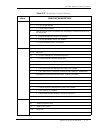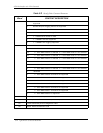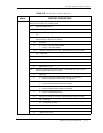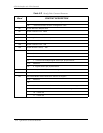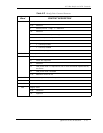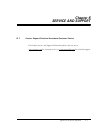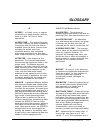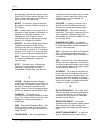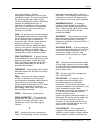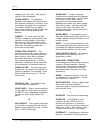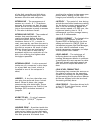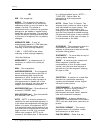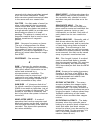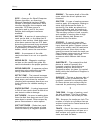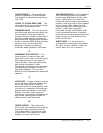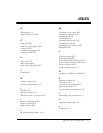
Glossary
Quickview 40 20/30/40GB AT G-7
covered with a hard metal alloy instead
of an iron-oxide compound. Plated
disks can store greater amounts of data
in the same area as a coated disk.
PLATTER – An disk made of metal (or
other rigid material) that is mounted
inside a fixed disk drive. Most drives
use more than one platter mounted on
a single spindle (shaft) to provide more
data storage surfaces in a small
package. The platter is coated with a
magnetic material that is used to store
data as transitions of magnetic
polarity.
POH – Acronym for power on hours.
The unit of measurement for Mean
Time Between Failure as expressed in
the number of hours that power is
applied to the device regardless of the
amount of actual data transfer usage.
See MTBF.
POSITIONER – See actuator.
R
RAM – Acronym for random access
memory. An integrated circuit memory
chip which allows information to be
stored and retrieved by a
microprocessor or controller. The
information may be stored and
retrieved in any order desired, and the
address of one storage location is as
readily accessible as any other.
RAM DISK – A “phantom disk drive”
for which a section of system memory
(RAM) is set aside to hold data, just as
if it were a number of disk sectors. The
access to this data is extremely fast
but is lost when the system is reset or
turned off.
READ AFTER WRITE – A mode of
operation that has the computer read
back each sector on the disk, checking
that the data read back is the same as
recorded. This slows disk operations,
but raises reliability.
READ VERIFY – A disk mode where the
disk reads in data to the controller, but
the controller only checks for errors
and does not pass the data on to the
system.
READ/WRITE HEAD – The tiny
electromagnetic coil and metal pole
piece used to create and read back the
magnetic patterns (write or read
information) on the disk. Each side of
each platter has its own read/write
head.
REMOVABLE DISK – Generally said of
disk drives where the disk itself is
meant to be removed, and in particular
of hard disks using disks mounted in
cartridges. Their advantage is that
multiple disks can be used to increase
the amount of stored material, and that
once removed, the disk can be stored
away to prevent unauthorized use.
RLL – Run Length Limited. A method
used on some hard disks to encode
data into magnetic pulses. RLL requires
more processing, but stores almost
50% more data per disk than the MFM
method.
ROM – Acronym for read only memory.
Usually in the form of an ROM in the
controller that contains programs that
can be accessed and read but not
modified by the system.
ROTARY ACTUATOR – The rotary
actuator replaces the stepper motor
used in the past by many hard disk
manufacturers. The rotary actuator is
perfectly balanced and rotates around a
single pivot point. It allows closed-loop
feedback positioning of the heads,
which is more accurate than stepper
motors.
ROTATIONAL LATENCY – The delay
between when the controller starts
looking for a specific block of data on a
track and when that block rotates
around to where it can be read by the
read/write head. On the average, it is
half of the time needed for a full
rotation (about 8 ms.).



